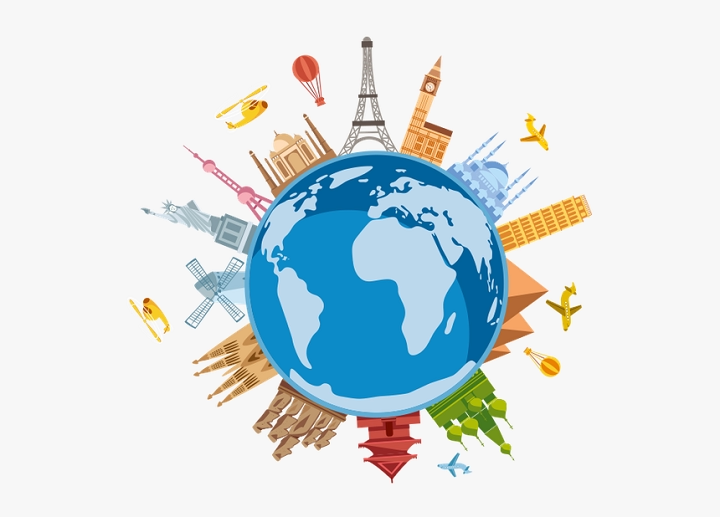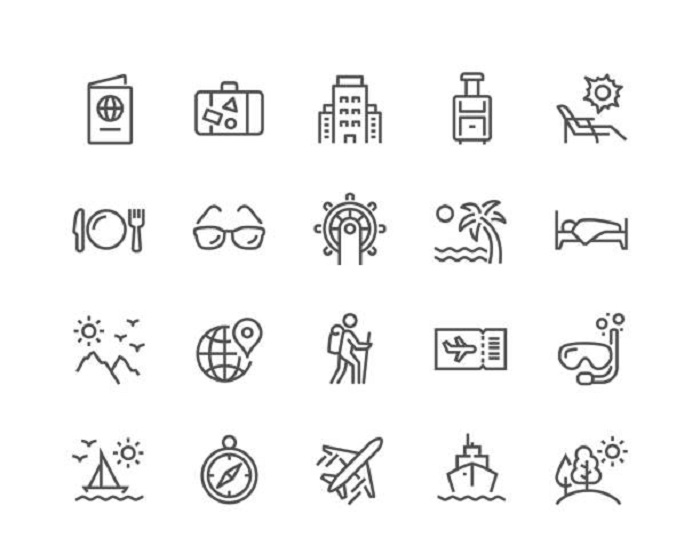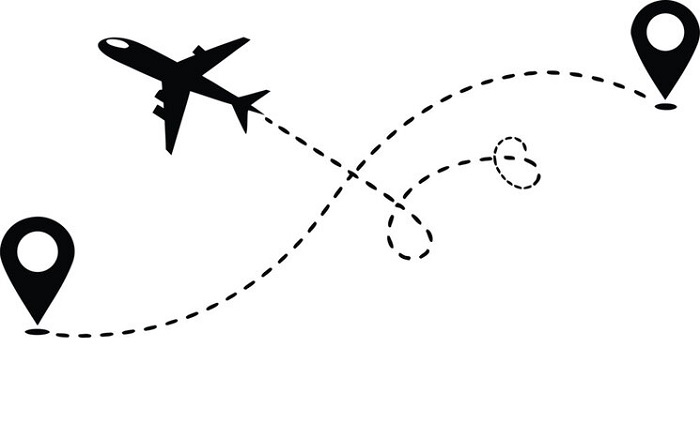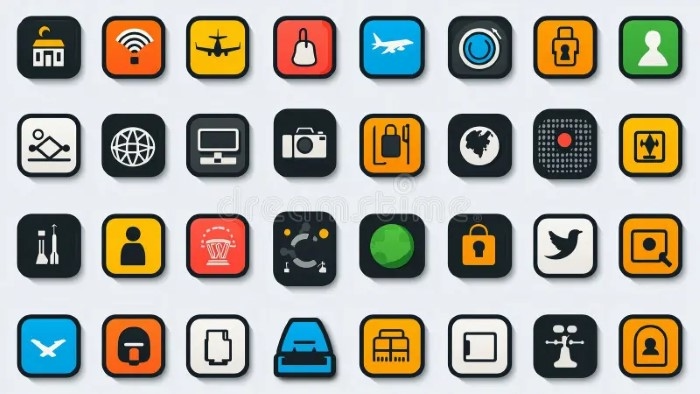There is that one wish in every traveller, to visit new places, meet new people, and experience the vibe of the world. The travel icon is a visual symbol which encompasses all those feelings of curiosity, freedom, and movement. From appearing on airport flight schedules, street signs, maps, even on holiday resorts, the travel icon immediately says something about a journey somewhere.
Symbols facilitate travel. They take us to airports, buses, hotels, and place names wordlessly. From aeroplanes and trunks to compasses and globes, symbols pervade every aspect of the journeying process. In this article, here, we will outline what the travel symbol is, what it actually appears as, where it resides, and why it is so deeply symbolic to travellers worldwide.
What Is a Travel Symbol
A travel symbol is any graphic or symbolic representation expressing travel from one place to another. It is widely used on maps, transport networks, tourist associations, travel companies, and apps to assist people in navigating easily.
Travel symbols are usually:
• ✈️ Plane symbol (airport or flight)
• 🧳 Suitcase (travel or luggage gear)
• 🗺️ Map (exploration and mapping)
• 🧭 Compass (adventure and navigation)
• 🚗 Car (road transport)
• 🚢 Boat (ship transport)
• 🚉 Train (railway station)
• 🏖️ Palm tree or beach umbrella (holiday destination)
They are all signs of a common language that individuals can recognize irrespective of the country they visit.
Symbol Meaning for Travel
A travel symbol is a sign of movement, discovery, and liberty. It symbolizes the need of human beings to explore the world and seek meaning in experience.
Symbol meanings:
• Airplane represents distant travel and adventure
• Suitcase represents planning, preparation, and discovery
• Compass represents decision-making, direction, and leadership
• Map represents curiosity and desire to take the unknown routes
• Globe represents the thought that the whole world is open to discovery
• Camera represents not forgetting to take pictures and stories along the way
The travel symbol reminds us that the world is vast and life makes more sense when we set out to explore it.
History of Travel Symbols
Travel symbols originated from early travelers and businesspeople who employed symbols and etchings to mark routes and destinations. Sailors diagrammed stars and waves as some of the earliest navigation symbols. Later, with the development of maps, ships and mountains were employed as symbols to mark routes.
In the 20th century, when air travel was made easy, the airplane symbol became the favorite travel icon. Later, hotels, airports, and travel agencies also began to use symbols for communication.
Now, computer travel software, websites, and maps all use tiny visual travel icons to instruct the user to navigate at once.
The Universal Language of Travel
Whenever you travel, travel symbols allow you to speak without words. You don’t know the native language, but you would already understand these symbols:
✈️ = flight or airport
🚉 = train station
🏨 = hotel
🍴 = restaurant or food
🏖️ = beach or holiday resort
Universal design language is effective, not confusing, and simplifies international travels.
Travel Symbol in Airports and Maps
Airports make the most use of travel symbols. You can’t walk a foot without seeing symbols guiding travelers.
Some airport travel symbols examples:
• ✈️ Plane denotes departure or arrival
• 🧳 Suitcase denotes baggage claim area
• 🚻 Man and woman denotes washroom signs
• 🕐 Clock denotes boarding time or schedule
• 🚫 denotes restricted or no entry area
Even on maps, symbols of travel count. Google Maps, for instance, uses small icons to indicate airports, hotels, places of interest, and restaurants. It helps plan one’s route visually instead of reading so much.
Travel Symbol in Art and Design
Travel symbols are not only used in maps. They are used in everyday design and art too. Designers utilize them in logos, posters, social media, and websites to represent the concept of traveling and mobility.
Common design applications:
• Plane or globe symbols are utilized by travel agencies in logos
• Landmarks like the Eiffel Tower or Taj Mahal are utilized by tourist boards
• Mountain or compass icons are used by adventure brands
• Waves or ship wheels are used by cruise brands
These small symbols tell tales of hope, dreams, and destinations.
Travel Symbol in Digital Communication
The travel symbol is everywhere in today’s digital communication. Symbols and emojis take precedence over long sentences to represent the emotions of traveling.
Textual illustrations:
• “Off to Bali ✈️🌴”
• “Vacation mode ready 🧳🏖️”
• “Adventure mode now 🧭✨”
These travel emojis and short messages express excitement and anticipation without saying much.
Cultural Symbolism of Travel
Different cultures assign varying interpretations to symbols of travel.
Western societies hold the airplane ✈️ as the leading symbol of travel in modern life and global connectedness.
In Asia, the boat 🚢 or compass 🧭 symbolizes the journey of life or destiny.
Ancient civilizations used the stars ✨ and the sun ☀️ as guidance and symbolized hope and light.
They are still utilized in contemporary work of art, tattoo designs, and travel symbols.
The Compass The Heart of Travel Symbol
The compass is a historic and strong symbol of travel. It represents direction, decision, and the human will to continue.
Compass symbolism in travel:
• Stability and purpose are represented by North
• South represents discovery and exploration
• East represents hope and rebirth
• West represents contemplation and rest
As a travel symbol for exploration, a compass invites visitors to be mindful while being at liberty to wander.
The Globe as Travel Symbol
🌍 The globe is also an exceedingly powerful travel symbol. It represents harmony, wholeness, and that the whole world is home.
Why the globe is powerful:
• It contains every culture and place in it
• It conveys the fact that people are united with travel
• It celebrates respect for nature and diversity
Every travel organization uses globe symbols to emphasize that they are global in extent and eco-friendly.
Modern Application of Travel Symbols
Travel symbols are applied all across the world today.
Where you find them:
• Airline businesses and air ticketing mobile apps
• Hotel booking websites
• GPS and maps
• Travel blogs and vlogs
• Travel manuals and mementos
Each of them represents the symbol as an energetic worldwide sign of exploration.
Travel Symbol in Branding
Markets that aim to represent adventure, liberty, or lifestyle are drawn to travel-associated symbols.
Examples:
• Airbnb uses a heart symbol for “belong anywhere.”
• Booking.com and Expedia use plane and suitcase symbols.
• Outdoor brands use mountain or map symbols for adventure.
These symbols inherently connect with travelers’ hearts and emotions.
Psychological Meaning of Travel Symbols
Travel symbols aren’t solely indicating directions, they’re triggering feelings.
Psychological connections:
• Airplane ✈️ Ambition, passion, progress
• Compass 🧭 Intelligence, direction, decision
• Suitcase 🧳 Preparation, accountability, curiosity
• Map 🗺️ Planning and discovery
• Globe 🌍 Harmony and understanding
They compel individuals to travel, plan, and exist outside of their comfort zones.
How to Use Travel Symbols in Design
If you’re creating a travel logo, travel blog, or travel poster, symbols can add meaning and color to your art.
How to use symbols in travel:
• Simplify and keep the icons minimalist
• Use bold colors representing excitement (blue, yellow, orange)
• Use symbols like ✈️🌍🧳 together to narrate a story
• Use culturally neutral icons for universal appeal
An amazing travel symbol communicates in a second without using words.
Travel Symbol in Tattooing and Accessories
Travel enthusiasts never fail to carry travel symbols as a badge of identity.
Best-sellers:
• Compass tattoo for traveling as a navigation apparatus
• Plane silhouette for freedom
• Globe pendant for global connection
• Coordinates of the city they love
• Map tattoos to record memories
These visual uses illustrate how travel has spread not only as a sensory experience but an emotional one.
Fascinating Travel Symbol Trivia
• More than 80% of travel apps prefer blue color with a globe or airplane icon
• The oldest symbol for travel is the compass, dating back to ancient China
• Globe emoji 🌍 is among the top 50 most used emojis worldwide
• The suitcase emoji 🧳 was added in 2018 to represent modern travel culture
Travel Symbols’ Significance in the Modern Day
Travel symbols are today part of the means of how the world expresses dreams, connection, and traveling. They are not merely navigation symbols but represent hope, serenity and global friendship.
While technology connects people like never before, travel symbols remind us of the value of real travel.
The travel symbol is more than a small picture. It’s a sign of freedom of movement, of exploration, of attachment. Wherever you see it on your phone, ticket, or map, it stands for the same, there is an adventure that awaits.
From the compass that led visitors centuries ago to emojis currently, the travel symbol continues to be a symbol of wonder and joy. It advises every traveler one basic thing, move forward, learn, and never stop exploring the world.




